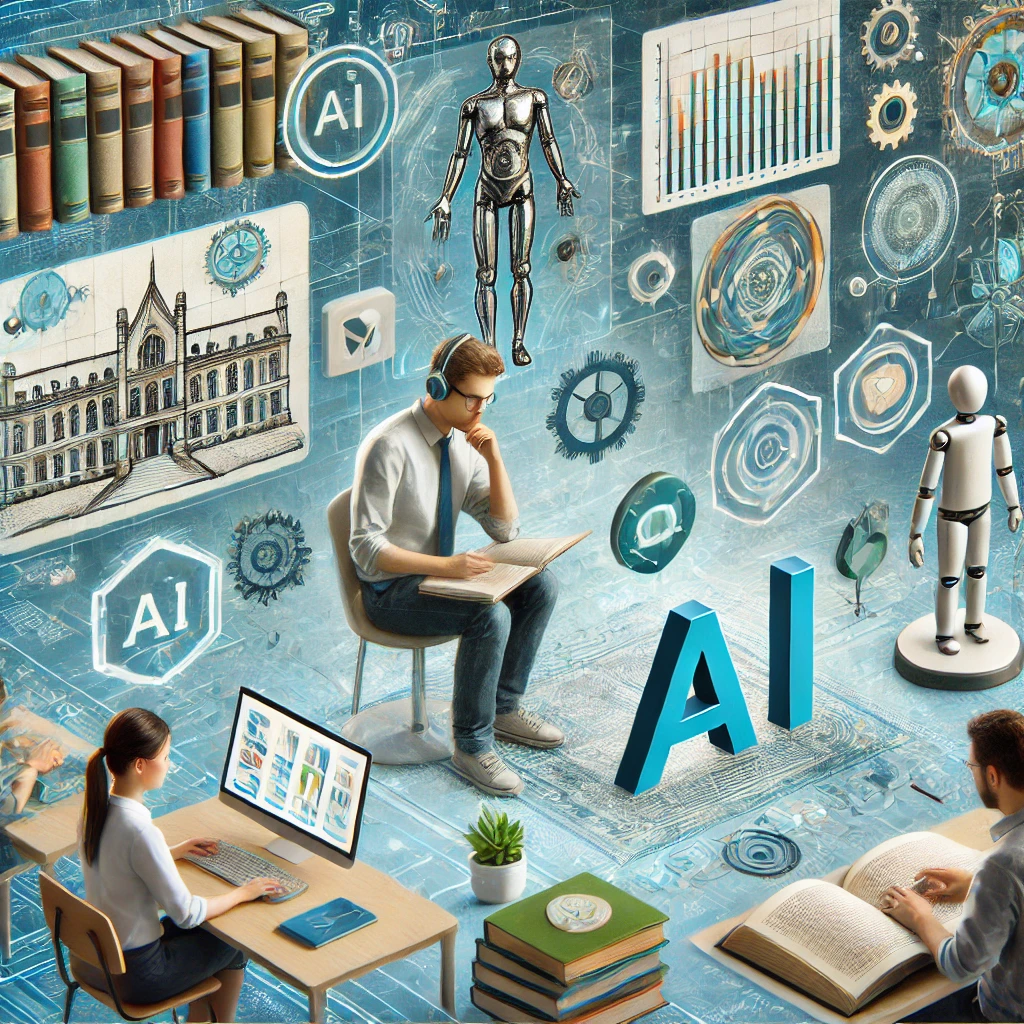A recent survey reveals that 71% of university staff in Australia are now integrating artificial intelligence (AI) into their work routines, signaling a shift in how academic professionals approach their teaching, research, and administrative tasks. AI is quickly becoming a valuable tool for enhancing efficiency, improving student engagement, and streamlining administrative processes. However, the remaining 29% of staff are still navigating challenges related to adoption, such as lack of familiarity or concerns about AI’s impact on education.
How Australian University Staff Are Using AI
The growing use of AI across Australian universities is transforming the academic landscape in several ways. From automating administrative duties to personalizing learning experiences, here’s a breakdown of how AI is being applied by the majority of university staff.
1. Streamlining Administrative Tasks
One of the most common uses of AI is in automating routine administrative tasks. AI-driven tools can handle everything from scheduling meetings and grading assignments to managing course materials. These applications free up time for educators and administrative staff to focus on more critical tasks, such as improving curriculum quality or providing personalized support to students.
For instance, AI tools like chatbots can handle inquiries from students, quickly answering questions about course requirements, deadlines, and campus resources. Additionally, administrative AI systems can assist in managing student enrollment data, financial records, and event planning, helping universities operate more efficiently.
2. Enhancing Student Learning
AI is also being used to enhance the learning experience for students. Many universities are deploying AI-powered platforms to offer personalized learning plans that adapt to each student’s strengths, weaknesses, and learning pace. These systems analyze student performance data and provide customized recommendations for study materials, practice exercises, and feedback, helping students achieve better academic outcomes.
In large lecture settings, AI can assist professors by monitoring student engagement levels and offering insights into which concepts students are struggling with the most. This allows educators to adjust their teaching strategies in real time to better meet students’ needs.
3. Supporting Research and Data Analysis
For academic researchers, AI has become an indispensable tool for data analysis. AI-driven algorithms can quickly process vast amounts of research data, identifying patterns, trends, and insights that might otherwise take human researchers months or years to uncover. This is particularly valuable in fields like genomics, climate science, and social sciences, where large datasets are common.
AI is also used to automate tasks like literature reviews, allowing researchers to identify relevant studies and sources with greater speed and accuracy. Some faculty members are even using AI to assist in writing research papers by generating drafts or summarizing findings.
4. Detecting Plagiarism and Academic Misconduct
With the rise of digital learning, universities are facing increased challenges around plagiarism and academic integrity. AI-based plagiarism detection software is being widely used by educators to ensure that students submit original work. These systems can scan and compare submissions against vast databases of academic publications, websites, and other sources to identify potential cases of academic misconduct.
5. AI in Predictive Analytics for Student Success
Some universities are using AI to predict student success and identify at-risk students early in their academic careers. By analyzing data such as attendance records, grades, and engagement metrics, AI can provide predictive insights that help university staff intervene before a student falls too far behind. This proactive approach improves retention rates and ensures that students receive the support they need to succeed.
What About the 29% of Staff Not Using AI?
Despite the growing adoption of AI, a significant portion of university staff—29%—are not yet using AI in their work. There are several reasons for this, ranging from unfamiliarity with the technology to concerns about the ethical implications of AI in education.
1. Lack of Familiarity and Training
For some educators and staff members, the primary barrier to AI adoption is a lack of familiarity with the technology. Many are unsure of how to integrate AI into their workflows or which tools are available for their specific needs. In some cases, universities may not have provided adequate training or resources to help staff feel comfortable using AI.
Without proper guidance, staff members may view AI as a complex or inaccessible technology, which can hinder its broader implementation. Some institutions are addressing this issue by offering workshops, training sessions, and technical support to help their staff get up to speed with AI tools.
2. Concerns About Job Security
One of the most frequently cited concerns about AI in the workplace is the fear of job displacement. Some university staff worry that as AI becomes more prevalent, their roles may be diminished or even replaced by automated systems. For example, administrative staff may feel that their work could be taken over by AI-powered tools, while educators might worry about AI-driven teaching systems encroaching on their role in the classroom.
Although AI is more often used to augment human capabilities rather than replace them, these concerns have caused hesitation among some staff members about fully embracing the technology.
3. Ethical and Privacy Concerns
Another concern for staff not using AI is the ethical implications of its use, particularly in relation to student privacy. AI systems often require access to large amounts of student data to function effectively, which raises questions about how that data is collected, stored, and used.
Some educators are cautious about relying on AI tools that may inadvertently violate students’ privacy or contribute to biases in grading or student success predictions. Additionally, concerns about the “dehumanization” of education, where decisions are made by machines rather than people, have made some educators skeptical of AI’s role in the academic environment.
4. Limited Access to Resources
In some cases, staff members may not have access to AI tools due to budget constraints or institutional priorities. Not all universities have the resources to invest in advanced AI systems, particularly smaller or less-funded institutions. As a result, some educators and staff are simply unable to explore the benefits of AI because they lack the infrastructure or support needed to implement it.
The Future of AI in Australian Universities
As AI continues to evolve, it’s likely that even more university staff will begin to adopt AI-powered tools in their work. With increased access to training and resources, combined with improvements in AI ethics and transparency, the barriers that currently prevent some staff from using AI are expected to diminish over time.
In the meantime, universities will need to strike a balance between leveraging AI’s capabilities and addressing the concerns of staff who are hesitant to adopt the technology. By fostering an environment that encourages collaboration between AI and human expertise, universities can ensure that they are preparing their students for a future where AI plays an increasingly prominent role.
As the use of AI grows, both in Australia and globally, the role of educators and staff will continue to evolve, blending human insight with technological innovation to create more efficient, engaging, and personalized academic experiences.





